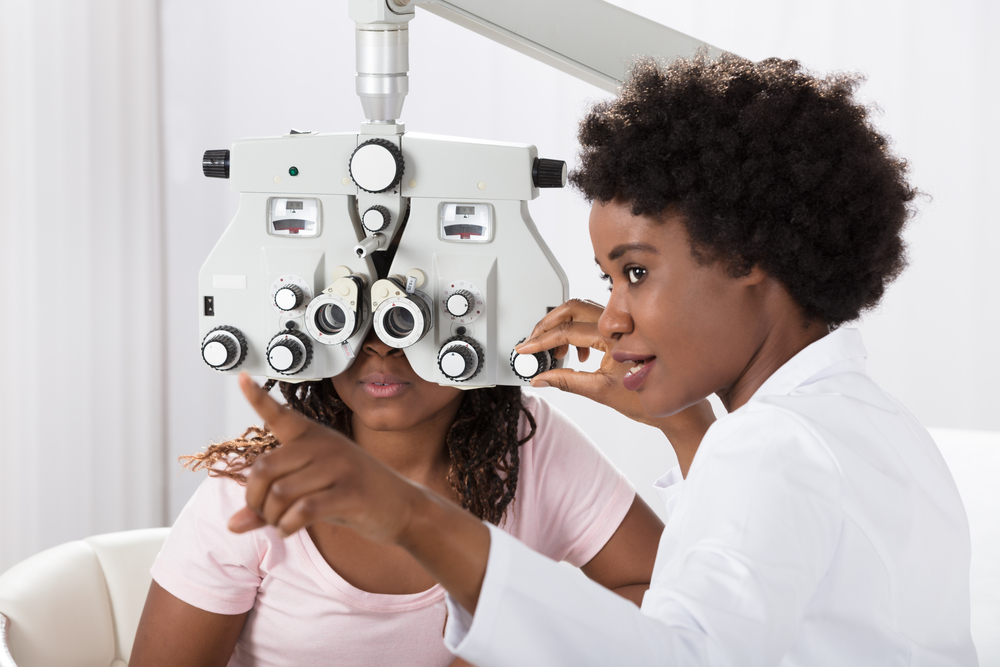The Step-by-Step Process of LASIK Eye Surgery
April 18, 2024
Are you tired of dealing with glasses and contacts? Many people need to wear these vision aids daily, and while they have many benefits, they can get frustrating over time.
It's no wonder that many individuals want a more permanent solution to common vision issues. One of the best treatment options for many people is LASIK.
With this minimally invasive procedure, you can have long-lasting vision improvements that make your life better and easier. But, how exactly does LASIK work?
Understanding the process of LASIK can give you peace of mind and help you understand why LASIK is so popular. Keep reading to learn the step-by-step process of LASIK!
What Is LASIK Eye Surgery?
 LASIK surgery is a type of eye surgery that can allow you to have greater visual freedom. It's called refractive eye surgery because it can correct refractive errors that cause blurry vision.
LASIK surgery is a type of eye surgery that can allow you to have greater visual freedom. It's called refractive eye surgery because it can correct refractive errors that cause blurry vision.
Many people seek out LASIK because it permanently fixes refractive errors, leading to clear vision and improved quality of life. LASIK is an outpatient procedure, meaning you will be able to go home the same day.
How Exactly Does LASIK Work To Repair Vision?
Your cornea is the dome-shaped transparent outer layer of your eye. When your cornea works as it should, it bends light entering your eye and directs it to land on the retina, which lines the inner wall of the back of the eye.
The cornea and retina work together so that your eye can process light and send electrical signals to your brain. If the cornea is misshapen, or if your eye is too short or too long, it prevents light from landing directly on the retina.
LASIK surgery fixes the shape of the cornea so that this process goes as it should, allowing you to see clearly.
Who Is A Good Candidate For LASIK?
LASIK cannot fix all vision issues. If you have impaired vision due to certain eye conditions like glaucoma or cataracts, LASIK will not be able to restore your vision.
LASIK can correct refractive errors, which are among the most common causes of blurry vision, and account for the majority of cases where people require visual aids to see clearly. This means LASIK can improve your vision if you have farsightedness, nearsightedness, or astigmatism.
 To be a good candidate for LASIK, you should meet the following requirements:
To be a good candidate for LASIK, you should meet the following requirements:
- You should be at least eighteen years old, although many patients wait until they are twenty-one
- Your glasses prescription should be stable for at least a year
- You should have healthy eyes
- You should not be pregnant or nursing
During your LASIK consultation, your eye doctor at SIEHT will examine your eyes to determine if LASIK is right for you.
Are you wondering if LASIK might be right for you?
The Steps Of LASIK
Understanding the LASIK process can be reassuring if you're considering the procedure.
Here are the steps of LASIK:
Step 1: Preparation
After determining that LASIK is right for you, you'll be able to schedule your procedure. At the beginning of this visit, your LASIK surgeon will give you numbing eye drops.
You may also receive a mild sedative to help you relax. You'll be awake during the procedure, which usually only takes about thirty minutes.
Step 2: Securing Your Eyelids
Next, your eye doctor will place an eyelid speculum to keep your eyelids open and prevent blinking. You may notice some pressure on your eyelid,
but it won't hurt.
Step 3: The Laser Process
Next, your LASIK surgeon will use a laser to make a thin flap in your cornea. From there, they will ask you to look at a light that's pointed to your eye.
Then, your LASIK surgeon will reshape your cornea using specialized lasers. You may hear a slight clicking sound, but this isn't a concern.
You also don't have to worry if you accidentally move your eye. The lasers will stop working if you move too much, as they measure your eye position constantly.
Step 4: Replacing the Flap
After the lasers reshape your cornea, your eye doctor will place the corneal flap back in place. Your eye will begin healing.
Step 5: The Recovery Process
Right after LASIK, your vision may be slightly blurry. This is normal, but you will need someone to drive you home after the treatment.
You'll receive a shield to protect your eyes, lubricating eye drops, antibiotic eye drops, steroidal eye drops, and aftercare instructions. Most people notice their vision is mostly clear the day after the procedure, however for some people it can take a few days to weeks to notice the full potential of their new vision.
You may notice some mild side effects such as discomfort, dry eyes, or light sensitivity. If you have any questions or concerns, your eye doctor is there to help and ensure the healing process goes smoothly.
Request A LASIK Consultation!
LASIK is an extremely successful and low-risk procedure. Over ninety-six percent of patients who have LASIK are happy with their results.
At SIEHT, we offer consultations to help determine if LASIK would be a safe, effective treatment option for you. We will determine if you're a good candidate for the procedure and work with you to restore your vision.
Do you want to learn if you might be a candidate for LASIK? Schedule an appointment at SIEHT in Fredericksburg or Stafford, VA, today!



